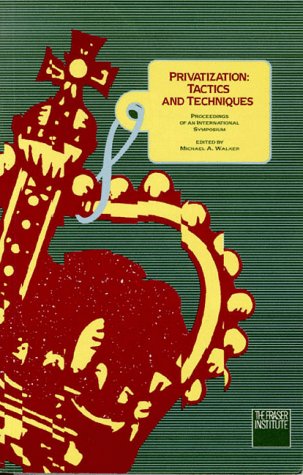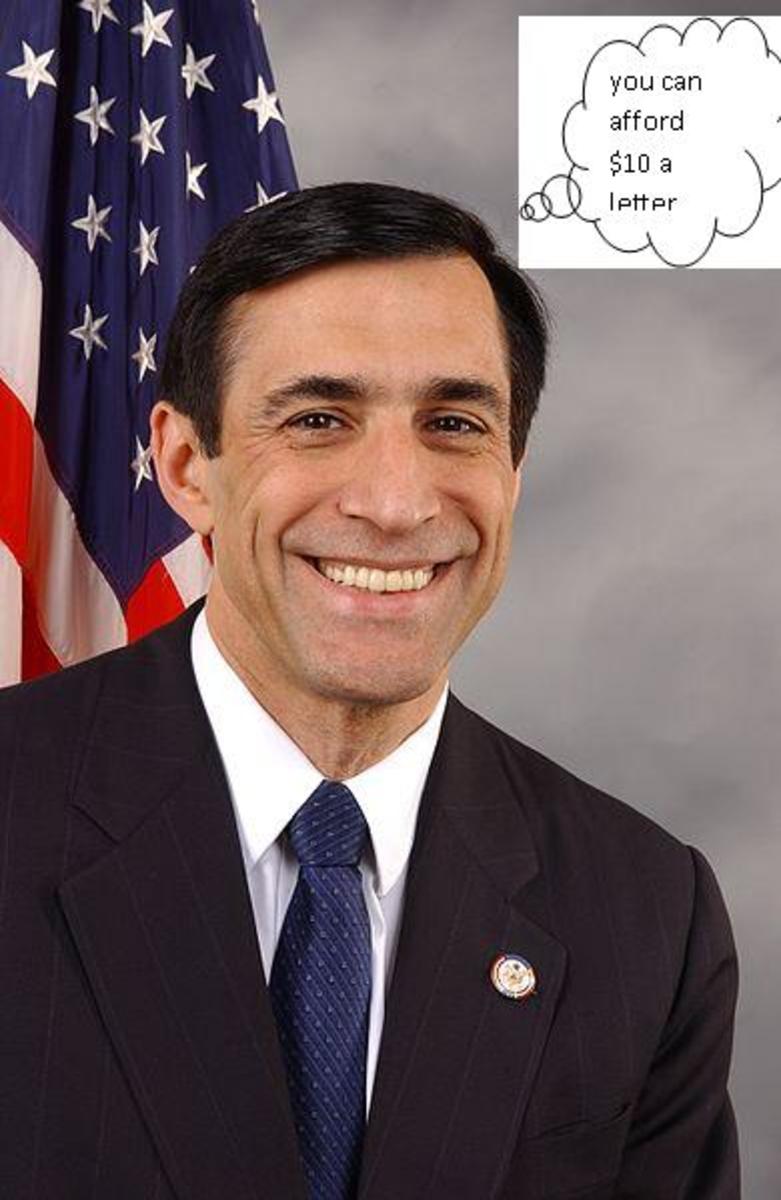Toronto Mayor Rob Ford and His Call for Privatization of the Toronto Community Housing Corporation
A Response to Request "Is Mr. Ford's idea of privatizing the TCHC a good idea?"
March 6, 2011
The big news in Toronto, Canada this week is the scandal involving the use of funds by the Toronto Community Housing Corporation (TCHC) for expensive parties, gifts and other perks for employees.
This news has resulted in Toronto's new Mayor, Rob Ford, to suggest that it may be time to privatize the TCHC and Hubber nightwork4 has asked if this is a good idea.
Having grown up in Rochester, New York across Lake Ontario from Toronto and having visited that city a number of times, I was intrigued by the Mayor's idea and did some research on the TCHC and Mayor Ford.
In addition to numerous local media accounts of the scandal and last fall's mayoral election, I was also able to find the two February 25, 2011 reports by Toronto's Auditor General which are the basis for the scandal.
The abuses of the corporation’s funds are outlined in a special Action Required report by the city of Toronto’s Auditor General entitled Toronto Community Housing Corporation - Controls Over Employee Expenses are Ineffective. This report was released on February 25, 2011.
While the report itself is a fairly standard documentation of government waste, two other things have combined to elevate this from a routine scandal to major news.
The first is the TCHC’s apparent record of poor customer service and poor maintenance of the housing units it manages.
YouTube Video Clip from Mayor Rob Ford's 2010 Mayoral Campaign
The second, and real spark that seems to have blown this into a major controversy, is the reaction of Mayor Rob Ford who won the October 25, 2010 Toronto Mayoral election.
While candidates in municipal elections
in Toronto, like those in some U.S. cities, run on a nonpartisan basis
without identifying party affiliation, Mayor Ford’s campaign platform
and actions since becoming mayor clearly identify him as a conservative.
After being elected on a platform promising to make government
more accountable and eliminate waste, his commenting on a Wednesday
March 2, 2011 interview on Toronto radio station Newstalk 1010 that he would consider privatizing the TCHC should not have surprised anyone.
Before
commenting on Mayor Ford’s suggestion that the TCHC be privatized,
let’s first take a look at the TCHC itself and the report.
TCHC is a Social (Public) Housing Entity Created in 2002
The Toronto Community Housing Corporation was created on January 1, 2002 when the City of Toronto combined the Toronto Housing Company and Metropolitan Housing Corporation into a single corporate entity owned by the City of Toronto.
TCHC provides housing for approximately 164,000 low and moderate income income tenants in 58,500 units in over 2,240 high, medium and low rise apartment buildings that it owns and which are worth about $6 billion. It employs about 1,400 people and is Canada’s largest social (public) housing provider.
According to the Auditor Generals February 25, 2011 Action Required report entitled Procurement Policies and Procedures Not Being Followed, in 2009 the TCHC spent over $600 million on its operations. About 50% of TCHC’s revenue is provided by the City of Toronto from tax funds and the remainder is from rents collected from its tenants.
Despite spending over six-hundred million dollars on its operations in 2009, the TCHC is way behind in routine maintenance and repair of its properties.
It has been estimated that it would take three-hundred million dollars to make all of the repairs needed to bring the properties up to standard. In addition to being the largest social (public) housing provider in Canada (and second largest in North America) it is also gaining a reputation as the worst landlord in Canada.
It Started With an Audit of Procurement Practices
The release of the Auditor General’s reports has only added to TCHC’s image problems. The audit of TCHC, which started as an outside audit of TCHC’s procurement policies and procedures by the City of Toronto’s Auditor General ended up being expanded into a deeper look into TCHC’s controls over employee expenses.
In the case of the procurement policies the Auditor General found numerous instances of employees not only routinely not following established policies and procedures when buying supplies and contracting for services but also frequently not properly documenting transactions. Without proper documentation (things, like invoices, itemized receipts, etc.) it was often difficult to determine if policies had been followed and whether or not the taxpayer supported TCHC had spent their money wisely.
Some of this could have been simple errors or occasional careless work.
Auditor’s generally look at a random sample of work and the occasional
mistake can end up in the sample. Upon finding such work auditors have
to ask themselves if such instances are the occasional exception or an
indication of a pattern that should be investigated further.
According
to the Auditor Generals’ report, the TCHC spends about $200 million per
year purchasing the goods and services it needs to operate and provide
housing services for its customers. The Auditor General suggests in the
report that better oversight in making sure the policies and procedures
are followed could result in the saving of $4 million to $10 million
per year on the things being purchased.
As a result of the
current uproar, some are calling for a deeper probe of the TCHC’s
purchasing, saying they believe that the problem is likely worse than
the Auditor General’s sample indicates and could possibly reveal
corruption rather than mere lax enforcement of procedures.
Auditor’s Report on Employee Expenditures
At the heart of the controversy is the additional Action Required report entitled Toronto Community Housing Corporation - Controls Over Employee Expenses are Ineffective that was also issued by the Auditor General on February 25, 2011.
The list of inappropriate expenses listed on page 3 of this report is what has turned this into a major scandal. The inappropriate expenses include:
Muskoka, the resort area north of Toronto that was the site of the $6,000 planning meeting cited in the Auditor General's Report.
Alliston, Ontario which is the location of the resort where Auditor General's report says the $3,000 two day staff planning session was held.
- The spending of $40,000 in 2008, $53,500 in 2009 and assumption of a similar expense in 2010 (the report only looked at expenses through June 30, 2010) for an annual Christmas dinner at a local banquet hall for the staff.
- $1,925 in expenses for a divisional planning meeting for eight staff members. This, apparently day long meeting, was held at a local spa and the expenses included a three course lunch plus pedicures, manicures and water therapy services for the attendees. There was apparently no charge for the meeting room.
- $6,000 for an off site planning session in Muskoka a luxury resort area north of Toronto (see map at right).
- $3,000 for accommodations and other expenses incurred for a two day staff planning session held in the Alliston resort area (see map at right) near Toronto.
- $1,850 for a four-hour boat cruise for staff training and development.
- Expenditures for staff birthday parties held throughout the year.
- $1,000 for Holt Renfrew chocolates that appear to have been given to the staff as gifts by the TCHC
- $1,004 for gift cards that appear to have been given to staff as rewards for achievment.
- Expenditures totaling $5,000 for entertainment at one restaurant in 2009 by one TCHC employee. Expense was approved by the individual in question and there is no supporting documentation, beyond credit card receipts, showing what was purchased, who attended and what was the specific purpose of the entertainment.
- Significant hospitality expenses for staff for seasonal festivities.
- A number of receipts from expenditures at local golf courses that appear to be for meals but no documentation as to what exactly was purchased, who attended or what was the the business purpose of the expenditure.
- $800 for massages provided for staff at a staff summer picnic.
TCHC Management's Response to the Audit
Management’s response, which is included in the report, is basically that these expenses were necessary and proper and were needed for both general staff morale as well as for bringing together into one one team the staff and management of the two separate entities, the Toronto Housing Company and Metropolitan Housing Corporation, which had been brought together in 2002 to create the TCHC.
Anyone who has worked in almost any type of organization, both public and private, is familiar with gifts of cash or other items being given to employees as a reward for achievement, with dinners and parties for special occasions as well as employee development sessions in more relaxed off site locations. There is also entertainment associated with staff meeting with clients as a part of marketing and sales activities.
While these activities are both necessary and legitimate, they also have to be closely monitored and controlled to make sure that they both serve a legitimate purpose in advancing the needs of the organization and also do not adversely affect the organization’s image.
Public Relations Problems Arising from TCHC Employee Expenses
The biggest problem with the expenses above is the lack of any type of evidence showing what business purpose these expenses served and how the TCHC and the Toronto taxpayers benefited from them.
Compounding this are two public relations problems. The first is having lavish parties and other perks for presumably well paid employees and managers at a time when many of the tax paying citizens are unemployed due to the recession (according to the website - see link module - for Service Canada, unemployment in the greater Toronto region was 7.7% in December 2010 which was down from 8.8% in December 2009).
The second is recent TV news reports showing the deplorable conditions in many of the housing units owned and operated by TCHC.
No matter how much an employee Christmas dinner party may boost employee morale it is difficult to convince the average taxpayer that the $53,500 price was justified as they watch a TV news report showing an old man in a TCHC apartment so infested with cockroaches that the critters are falling into the man’s coffee and drowning as he tries to drink it.
How Markets Work
While some things, like national defense, courts, police and public safety are usually best done by government, most other economic activities are better served by the private sector which includes both for profit and nonprofit organizations.
The resources needed to produce goods and services for consumers are scarce. The same scarce land, labor and capital used to produce one thing cannot be used to produce another. Adam Smith’s metaphor of an unseen, or invisible, hand that guides participants in a free market to use resources efficiently and produce what consumers want is an apt one.
Producers who produce what consumers want are rewarded with profits while those who miscalculate and produce things that consumers don’t want are punished with financial losses and ultimately bankruptcy. Trial an error is at work here but error is limited by the fact that too many errors and the organization is out of business.
Correctly judging and then producing what consumers want will produce profit initially but to grow, or even continue to receive profit, and organization will have to concentrate on the cost of the resources it uses. In a free market profit both rewards those who discover and produce what consumers want as well as acting as a signal broadcasting consumer preferences to all producers.
As more producers move into production of popular goods and services competition ensues as each producer seeks to find ways to both improve the product as well as reduce costs by finding more efficient ways to produce it using fewer resources.
Government actions can distort this market process. By limiting competition through regulatory or other policies, governments can bestow monopoly or semi-monopoly protection on one or more producers thereby protecting the monopolists from competition and removing the incentive to seek efficiency and reduce prices
Government subsidies can make up for lost revenue thereby relieving the subsidized entities from having to find ways to reduce costs by being more efficient.
In the case of the TCHC, the owner of the corporation is the City of Toronto which provides the TCHC with half of its annual revenues from taxes collected from the Toronto taxpayers. .This taxpayer subsidy allows the TCHC to keep the rents below market levels on its properties which gives it a significant advantage over potential competitors.
Thanks to the subsidy from the city, TCHC enjoys a quasi monopoly in the low income niche of the local housing market. With few alternatives to choose from, residents of TCHC housing have little choice other than to continue renting from TCHC. While the tenants’ low incomes prevent TCHC from increasing its revenue by raising rents, it can increase its profit or surplus by reducing costs.
The easiest way for a monopoly to reduce costs is to reduce quality. In this case, quality is reduced by deferring needed maintenance as well as reducing or eliminating needed services such as pest control, security, etc. Both print and electronic media in Toronto have been running stories TCHC tenants living in units that are literally falling apart or overrun with vermin as well as accounts of other properties sitting vacant because they are uninhabitable.
Both for-profit and non-profit organizations that don’t have access to taxpayer subsidies or government protection from competition have to control and reduce costs while continuing to meet consumers’ demand for quality goods and services. Failure to do this results in their forced out of business as revenues decline and financial losses increase each year.
Privatizing the TCHC
The TCHC could be spun off either as a nonprofit organization with a mission to provide decent low income housing or the city could simply sell (or distribute to the taxpayers) its ownership rights in the corporation. Either of these methods would change ownership of the corporation from government owned to privately owned as a for profit or not for profit corporation. Absent city ownership and city taxpayer subsidy the new owners would have to run the corporation subject to the discipline of the market.
A third option would be for the city to keep the TCHC as a city owned corporation and have the TCHC continue to own the portfolio of housing properties but contract out with private management companies to manage and maintain the properties.
By outsourcing most of its operations, the TCHC would see a reduction in its labor costs as fewer employees would be needed (transferring their work to other employers would result in those employers needing to hire more workers which means that the TCHC employees let go would not necessarily find themselves unemployed).
Better management by the companies selected to manage and maintain its properties should result lower costs which would mean greater profits and more revenue for the TCHC. The increase in its revenue and decrease in its operating costs should enable the city to eliminate, or at least significantly reduce, its subsidy for the TCHC thereby relieving the taxpayers of this burden.
Privatization of TCHC Not a Simple Process
A March 2, 2011 article in the Toronto Star newspaper by Paul Moloney described some problems Toronto Mayor Rob Ford will encounter when he tries to privatize TCHC.
The first is the Province of Ontario’s Social Housing Reform Act of 2000 which requires that the City of Toronto (and presumably other cities in the province) replace with other housing any housing units that they sell or otherwise dispose of out of their current portfolio. The object of the law is to ensure that the number of low income housing units owned by the city not be reduced.
This law apparently simply requires the city to keep the number of housing units owned constant but does not necessarily require that the units be kept in use and in livable condition.
I say this because an October 28, 2010 article in the Toronto Sun newspaper by Terry Davidson reporting on the sale of a package of twenty housing units with a market value of $8.6 million for less than $400,000 to Wigwam, a First Nations social housing organization.
According to the article many of the units were vacant as their condition was so bad that they were uninhabitable. TCHC was forced to sell the properties to avoid having to continue the expense of making the mortgage payments on the properties.
However, rather than reaping a profit from selling them for the appreciated value of the land, TCHC ended up transferring them to the Wigwam organization in exchange for Wigwam taking over the mortgages and investing $1.2 million of its funds to renovate the units and promising to keep them in the city’s social (public) housing inventory.
Other Provincial and Federal laws also may present additional barriers to the privatization of the TCHC.
It appears that Mayor Rob Ford has his work cut out for him.
Do You Think that the TCHC should be privatized?
- http://www.toronto.ca/audit/2011/procurement-feb25.pdf
Text of Toronto Auditor General's audit of TCHC's procurement policies. - http://www.toronto.ca/audit/2011/employeeexpense-feb25.pdf
Text of Toronto Auditor General's audit report on TCHC's Employee Expense abuses - Public housing: What are Fords options? - thestar.com
Mayor Rob Ford has mused about privatizing the social housing portfolio run by Toronto Community Housing, but it gets complicated. - Fire sale of social housing dwellings | Toronto & GTA | News | Toronto Sun
October 2010 article in Toronto Sun describing sale of dilapidated and vacant housing by TCHC - Toronto Region Labour Market Monitor: Service Canada, December 2010
- Toronto Community Housing
Toronto Community Housing Corporation Home Page














